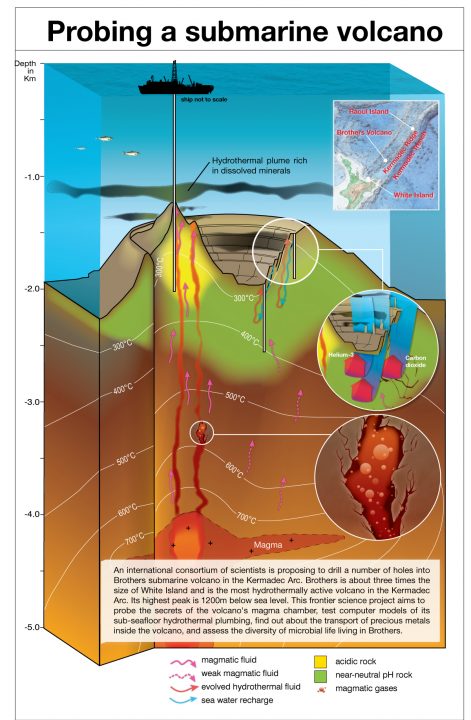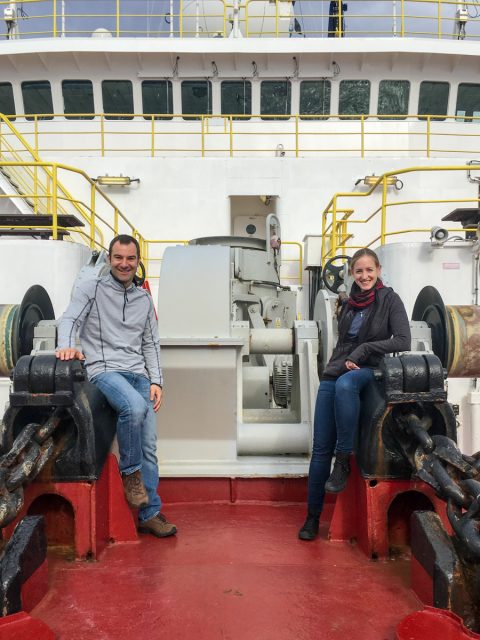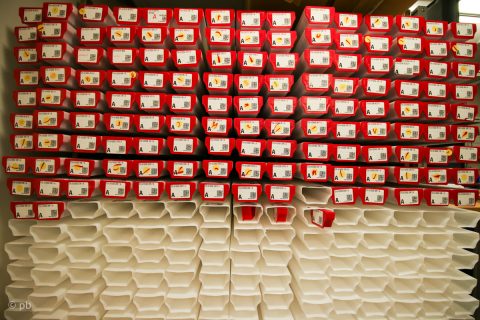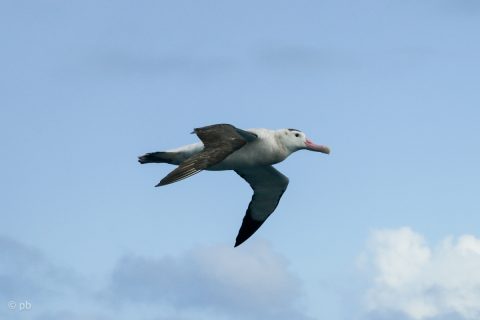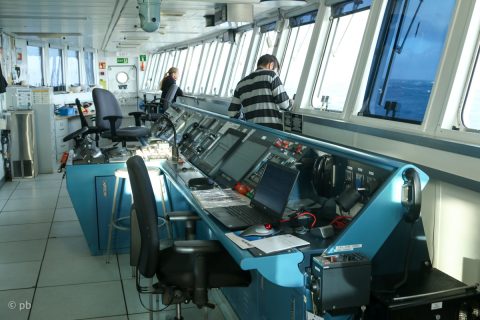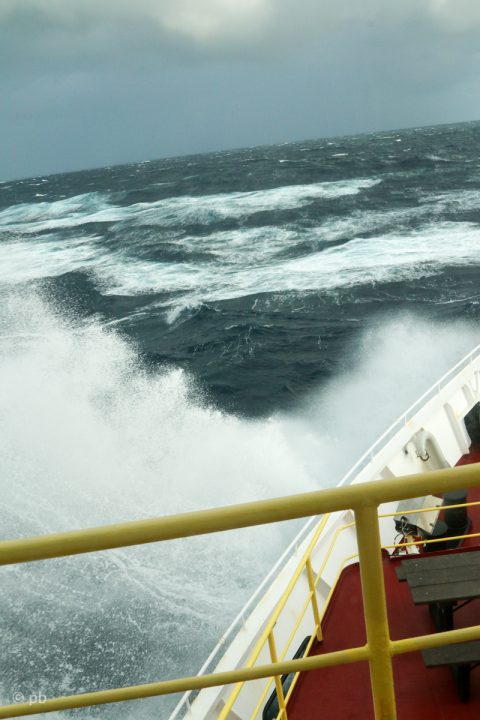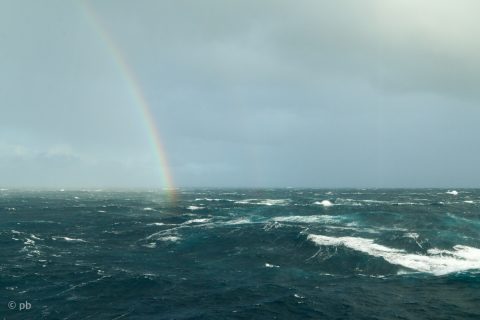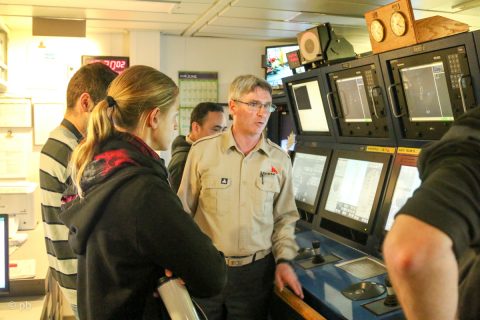Latitude: 34.882°S
Longitude: 179.068°E
Days at Sea: 32
In the last post, Karen mentioned the term ‚WOWing‘. The term is actually an abbreviation for ‘Waiting-On-Weather’ and means that the weather and/or the seas are too rough to continue with our operations. This happened already a few times during our Expedition, the last time on Thursday. The wind picked up to Beaufort 8-9 (around 40 knots) and the sea reached wave heights of 30 ft. Some of the waves hit us quite hard but the JR stood strong in these conditions. Thanks to our powerful 12 thrusters that kept us on position – and we still had 50% thruster power as a reserve! However, since also the heave (the up and down movement at the centre of the ship) was reaching 5 metres (the safe working limit for our heave compensator) we needed to halt operations and WOW. However, things calmed down again and we are back into operations.
The last few days we spent with downhole logging of our 360 metres deep drillhole at the resurgent dome of Brothers. Not a too big surprise but after we stopped circulating cold seawater through the drillhole, it turned out to be hot and acidic down there. And whatever we retrieve from inside the volcano there, the smell of rotten eggs can’t be denied. This is due to the large amounts of sulphur that is coming out of every single pore of the volcano. You can find a sketch of how we think the hydrothermal system at Brothers works below. It is a modified version of a model published by one of our co-chiefs, Dr. Cornel de Ronde from GNS Science in New Zealand (de Ronde et al., 2011). The Site where we are currently drilling is illustrated and you can see how big the direct magmatic input is assumed for the Site at the resurgent dome. So in fact the volcano may be currently sleeping but it is anything but inactive and still pretty hot inside!
In the meanwhile, we have finished describing the last cores macroscopically and are working hard to get the microscopic descriptions done before we start drilling deeper. Before that, however, we need to clean the hole. One of our logging tools, the Kuster fluid samples disconnected from the wireline during operations and got lost at the end of the drillhole. Several attempts to retrieve the tool back using our ‘fishing gear’ (actually that is not a fishing line but a solid piece of steel to catch objects in the drillhole) failed and so we consider to use a grinding bit in order to clear (and save) our drillhole. After that we will start to core again. Keep your fingers crossed for ongoing successful operations!
This week, we also celebrated ‘Hump Day’ which means we are half way through our expedition. We are looking forward to another three and a half weeks of exciting scientific drilling in the Kermadec Arc north of New Zealand.
pb
